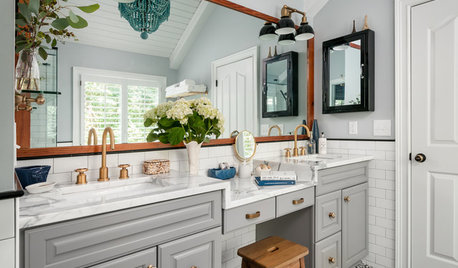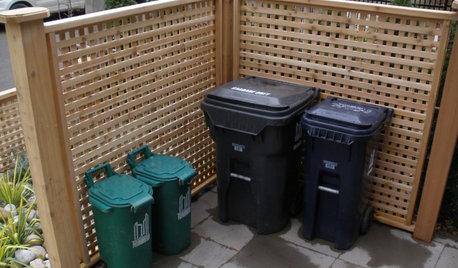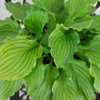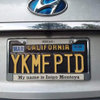What I learned today; ammonia fertilizes hosta
Jon 6a SE MA
9 years ago
Related Stories

BATHROOM MAKEOVERSWhat I Learned From My Master Bathroom Renovation
Houzz writer Becky Harris lived through her own remodel recently. She shares what it was like and gives her top tips
Full Story
GARDENING GUIDESGet on a Composting Kick (Hello, Free Fertilizer!)
Quit shelling out for pricey substitutes that aren’t even as good. Here’s how to give your soil the best while lightening your trash load
Full Story
GARDENING GUIDESLearn the Secret to Bigger and Better Roses
Grow beautiful roses using both ordinary and unusual soil amendments
Full Story
DECORATING GUIDES9 Lessons We Can Learn From Drawing Rooms
Let these formal rooms inspire you to create entertaining spaces that encourage conversation, music and games
Full Story
DECORATING GUIDESThe Dumbest Decorating Decisions I’ve Ever Made
Caution: Do not try these at home
Full Story
TASTEMAKERS'In Praise of Shadows' Finds Relevance in Today's Architecture
Light and bright homes are more popular than ever, but in shadows lie poetry, subtlety and great beauty
Full Story
THE POLITE HOUSEThe Polite House: What Can I Do About My Neighbors’ Trash Cans?
If you’re tired of staring at unsightly garbage way before pickup day, it’s time to have some tough conversations
Full Story
GARDENING GUIDESNew Ways to Think About All That Mulch in the Garden
Before you go making a mountain out of a mulch hill, learn the facts about what your plants and soil really want
Full Story
LIFEOh Yeah, There’s a Snake in the House
A Houzz contributor lives through her worst nightmare and comes out the other side with lessons learned and new footwear
Full Story
GARDENING GUIDESCommon Myths That May Be Hurting Your Garden
Discover the truth about fertilizer, soil, staking and more to keep your plants healthy and happy
Full Story








bragu_DSM 5
User
Related Professionals
Windham Landscape Architects & Landscape Designers · Birmingham Landscape Architects & Landscape Designers · Harvey Landscape Architects & Landscape Designers · Fort Payne Landscape Contractors · Newnan Landscape Contractors · Rosemount Landscape Contractors · Saint John Landscape Contractors · St. Louis Landscape Contractors · Suitland Landscape Contractors · West Covina Landscape Contractors · Kingsburg Landscape Contractors · Grand Rapids Driveway Installation & Maintenance · Springfield Driveway Installation & Maintenance · Randolph Solar Energy Systems · Sanger Solar Energy SystemsBabka NorCal 9b
Jon 6a SE MAOriginal Author
Jon 6a SE MAOriginal Author
Babka NorCal 9b
Jon 6a SE MAOriginal Author
hostahosta
Jon 6a SE MAOriginal Author
Jon 6a SE MAOriginal Author
Jon 6a SE MAOriginal Author
santamiller
Jon 6a SE MAOriginal Author
santamiller
Jon 6a SE MAOriginal Author
santamiller
Slimy_Okra
Jon 6a SE MAOriginal Author
Jon 6a SE MAOriginal Author